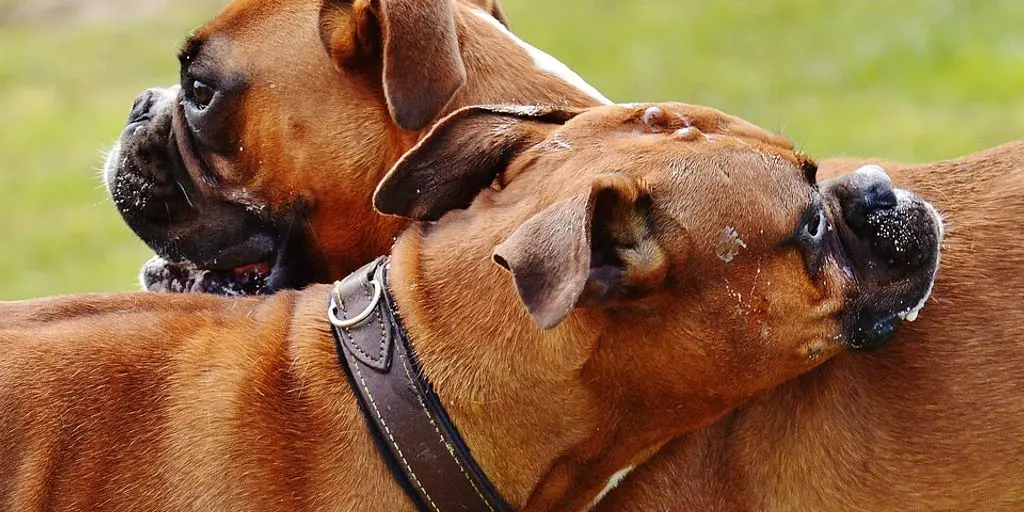Urinary incontinence in dogs can be a distressing issue for both pets and their owners. While it is essential to consult a veterinarian to identify the underlying causes, several home remedies can help manage and alleviate the symptoms. This article explores various home remedies, dietary changes, and alternative therapies to support dogs suffering from urinary incontinence.
Key Takeaways
- Identifying the common causes of urinary incontinence is crucial for effective treatment.
- Dietary changes, such as a grain-free diet and increased water intake, can help manage incontinence.
- Herbal remedies like corn silk, saw palmetto, and horsetail offer natural alternatives for symptom relief.
- Acupuncture and bladder expression techniques can be beneficial in managing urinary incontinence in dogs.
- Regular monitoring and veterinary consultations are essential to adjust treatments and ensure the well-being of your dog.
Common Causes of Urinary Incontinence
Urinary incontinence in dogs can be a real challenge for pet owners. Understanding the root causes can help in managing and treating this condition effectively. Here are some of the most common causes:
Hormonal Imbalances
Hormonal imbalances, especially in spayed female dogs, can lead to urinary incontinence. The lack of estrogen can weaken the muscles that control the bladder, causing leakage.
Bladder Infections
Bladder infections are another frequent cause. These infections can irritate the bladder, leading to frequent urination and accidents. Consistent treatment is key to managing this issue.
Spinal Injuries
Spinal injuries can disrupt the nerves that control the bladder, making it difficult for your dog to hold urine. This is often seen in older dogs or those with specific injuries.
If you notice your dog having accidents, it’s essential to consult your vet to rule out these common causes and get effective tips for house training an older dog. Consistency, positive reinforcement, and understanding your dog’s needs are key. Seek professional help for persistent issues.
Signs Your Dog Might Be Suffering from Incontinence
I probably don’t need to tell you how you’ll know your dog is incontinent. It’s usually pretty obvious! The most common sign of urinary incontinence in dogs is wet spots wherever your dog sleeps. You might also notice:
Frequent Urination
If your dog is suddenly needing to go out more often or is having accidents inside, it could be a sign of incontinence. Frequent urination can be a red flag that something’s not right.
Wet Spots Where Your Dog Sleeps
One of the most telltale signs is finding wet spots on your dog’s bedding or favorite resting spots. This usually happens when they are resting or sleeping, and it’s a clear indicator that they might be struggling with incontinence.
Licking of the Genital Area
Dogs often lick their genital area more than usual when they are experiencing discomfort or irritation. If you notice your dog doing this frequently, it could be due to urine leakage causing irritation.
Recognizing and managing these symptoms early is crucial for your dog’s well-being. If you notice any of these signs, it’s a good idea to consult your veterinarian for further advice.
Dietary Changes to Help Manage Incontinence
When it comes to managing urinary incontinence in dogs, diet can play a significant role. Here are some dietary changes that might help your furry friend.
Grain-Free Diet
Switching to a grain-free diet can be beneficial for dogs with urinary incontinence. Grains can sometimes cause inflammation, which might exacerbate incontinence issues. By eliminating grains, you may help reduce this inflammation and support better bladder health. It’s worth trying a grain-free diet for a few weeks to see if there’s any improvement.
Increased Water Intake
It might seem counterintuitive, but increasing your dog’s water intake can actually help manage incontinence. More water helps to flush out the bladder and reduce the risk of infections, which can be a contributing factor to incontinence. Make sure your dog always has access to fresh, clean water.
Specialized Dog Foods
There are specialized dog foods available that are formulated to support urinary health. These foods often contain ingredients that promote bladder health and reduce the risk of urinary tract infections. Consult your vet to find the best option for your dog.
Sometimes, simple dietary changes can make a big difference in managing your dog’s urinary incontinence. Always consult with your vet before making any significant changes to your dog’s diet.
Herbal Remedies for Urinary Incontinence
When it comes to managing urinary incontinence in dogs, natural remedies can be a great option. These herbal treatments can often be used alongside conventional medicine to help support healthy bladder function. Here are a few herbs that might help your furry friend:
Corn Silk
Corn silk is known for its soothing properties and can help reduce inflammation in the urinary tract. It’s easy to find and can be added to your dog’s diet as a supplement.
Saw Palmetto
Saw palmetto is another herb that can be beneficial for dogs with urinary incontinence. It helps to strengthen the bladder and improve overall urinary health.
Horsetail
Horsetail is rich in silica, which can help to tone the bladder and reduce leakage. It’s a natural diuretic, so it can also help to flush out any toxins that might be contributing to the problem.
Remember, it’s always a good idea to consult with your vet before starting any new treatment, especially when it comes to herbal remedies. They can help you determine the right dosage and ensure that the herbs won’t interact with any other medications your dog might be taking.
Using Acupuncture for Incontinence

How Acupuncture Works
Acupuncture is a popular natural treatment for urinary incontinence in dogs. It works by stimulating the nerves responsible for urinary control. While its efficacy is highly questionable, many pet owners have found it beneficial. If you’re curious about this treatment, a holistic veterinarian can provide more information.
Finding a Qualified Practitioner
When looking for a practitioner, it’s essential to find someone qualified. You can often find a local veterinary rehab facility that offers acupuncture. Make sure to check their credentials and experience to ensure your dog is in good hands.
What to Expect During a Session
During an acupuncture session, your dog will have tiny needles inserted into specific points on their body. The process is generally painless and can be quite relaxing for your pet. Sessions typically last between 20 to 30 minutes, and you may need multiple sessions to see results.
If you’re considering acupuncture for your dog’s urinary incontinence, it’s crucial to get the facts first before making a decision.
Bladder Expression Techniques
If your dog is struggling with urinary incontinence, bladder expression can be a helpful technique. This involves manually helping your dog empty their bladder to prevent infections and maintain bladder muscle tone. Bladder expressing is a very real health concern for dogs, especially those with spinal injuries or other conditions that affect their ability to urinate on their own.
Creating a Comfortable Living Environment
When dealing with canine urinary incontinence, setting up a comfortable living environment is crucial. This not only helps your dog feel more at ease but also minimizes the stress and mess for you. Here are some tips to make your home more accommodating for a dog prone to accidents.
Monitoring Your Dog’s Condition
Keeping an eye on your dog’s condition is crucial when dealing with urinary incontinence. Regular monitoring helps you catch any changes early and adjust treatments as needed. Here are some tips to help you stay on top of your dog’s health.
Keeping a Symptom Diary
A symptom diary can be incredibly useful. Note down observations like:
- When and where you find urine
- When the problem started and if it’s getting better or worse
- If your dog needs to go outside more frequently
- If your dog is drinking more water than usual
- Any other unusual symptoms
Regular Vet Check-ups
Regular vet visits are essential. Your vet can provide professional insights and adjust treatments based on your dog’s progress. Don’t hesitate to ask questions or bring up any concerns you have.
Adjusting Treatments as Needed
Sometimes, treatments need tweaking. Whether it’s changing medications or trying new home remedies, being flexible can make a big difference. Always consult your vet before making any changes.
Monitoring your dog’s condition closely can make a world of difference in managing urinary incontinence effectively.
When to Consult Your Veterinarian
It’s crucial to know when to take your dog to the vet for urinary incontinence. While home remedies can be effective, there are times when professional help is necessary. Frequent urinary tract infections or other complications can indicate a more serious issue that needs medical attention. If you notice any of the following signs, it’s time to consult your veterinarian:
Signs of Complications
If your dog shows signs of complications, such as blood in the urine, severe pain, or a significant change in behavior, you should seek veterinary care immediately. These symptoms could indicate a more severe underlying condition that requires prompt treatment.
Ineffectiveness of Home Remedies
Sometimes, despite your best efforts, home remedies might not work. If you’ve tried various treatments and your dog’s condition hasn’t improved, it’s essential to discuss bladder control issues with your dog’s veterinarian. They can provide a more accurate diagnosis and recommend appropriate treatments.
Exploring Medical Treatments
When home remedies aren’t enough, medical treatments may be necessary. Your vet can offer options like medications or even surgical interventions to help manage your dog’s incontinence. Don’t hesitate to explore these options if home remedies fail to provide relief.
Always keep an open line of communication with your vet. They are your best resource for ensuring your dog’s health and well-being.
Preventing Urinary Incontinence
Preventing urinary incontinence in dogs is all about maintaining their overall health and well-being. Here are some tips to help keep your furry friend in top shape and reduce the risk of incontinence issues.
Success Stories: Real-Life Experiences
Case Study 1: Bella’s Journey
Bella, a 7-year-old Labrador, started showing signs of urinary incontinence after being spayed. Her owner, Sarah, was initially overwhelmed but decided to try some home remedies. Switching Bella to a grain-free diet and incorporating corn silk into her meals made a significant difference. Within a few weeks, Bella’s accidents reduced dramatically, and she seemed much happier.
Case Study 2: Max’s Improvement
Max, a 5-year-old German Shepherd, suffered from incontinence due to a spinal injury. His owner, Tom, was determined to find a solution. After consulting with a holistic vet, Tom started Max on a regimen of saw palmetto and acupuncture sessions. The results were astonishing. Max’s condition improved, and he regained control over his bladder. Tom couldn’t be more pleased with the outcome.
Case Study 3: Daisy’s Recovery
Daisy, a 9-year-old Beagle, had frequent bladder infections that led to incontinence. Her owner, Emily, tried various treatments but found success with a combination of specialized dog foods and horsetail supplements. Daisy’s incontinence issues gradually subsided, and she became more energetic and playful.
These stories highlight the importance of exploring different home remedies and consulting with professionals to find the best solution for your dog’s urinary incontinence.
Conclusion
Dealing with urinary incontinence in dogs can be challenging, but there are plenty of home remedies that can help manage the condition and improve your dog’s quality of life. From natural supplements like phytoestrogens and saw palmetto to lifestyle changes such as a grain-free diet and acupuncture, there are various options to explore. Always consult your veterinarian before starting any new treatment to ensure it’s safe and appropriate for your furry friend. With a bit of patience and the right approach, you can help your dog live comfortably and happily despite their incontinence issues.
Frequently Asked Questions
What are the common causes of urinary incontinence in dogs?
Common causes include hormonal imbalances, bladder infections, and spinal injuries.
How can I tell if my dog is suffering from urinary incontinence?
Signs include frequent urination, wet spots where your dog sleeps, and excessive licking of the genital area.
Can dietary changes help manage my dog’s incontinence?
Yes, dietary changes such as a grain-free diet, increased water intake, and specialized dog foods can help manage incontinence.
Are there any herbal remedies for urinary incontinence in dogs?
Yes, herbal remedies like corn silk, saw palmetto, and horsetail have been used to manage urinary incontinence in dogs.
How does acupuncture work for treating incontinence in dogs?
Acupuncture works by stimulating the nerves responsible for urinary control. It’s important to find a qualified practitioner for this treatment.
What are bladder expression techniques and when should they be used?
Bladder expression techniques involve manually helping your dog empty its bladder. They should be used when your dog cannot urinate on its own and should be done under veterinary guidance.
When should I consult my veterinarian about my dog’s urinary incontinence?
You should consult your veterinarian if you notice signs of complications, if home remedies are ineffective, or if you want to explore medical treatments.
Can urinary incontinence in dogs be prevented?
While not all cases can be prevented, maintaining a healthy weight, providing regular exercise, and ensuring routine vet visits can help reduce the risk of urinary incontinence.


